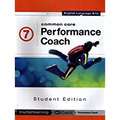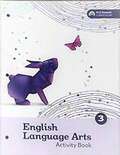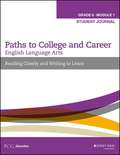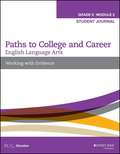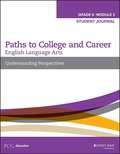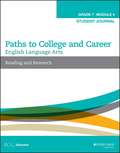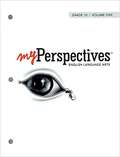- Table View
- List View
English Language 2 class 10 - Karnataka Board
by Karnataka Patyapusthaka SnghaEnglish Language-2 textbook for 10th Standard Kannada medium, Karnataka State
English Language 2 class 7 - Karnataka Board
by Karanataka text book societyIts an 7th standard English language -2 text Book
English Language Arts (Oklahoma Buckle Down to the OAS #Grade 6)
by Triumph Learning LlcNIMAC-sourced textbook
English Language Arts Activity Book 1
by Dale-Marie Bryan Alane Gernon-Paulsen Amy LosiNIMAC-sourced textbook
English Language Arts Common Core, Volume 2
by Grant Wiggins Jeff Anderson Arnetha F. BallNIMAC-sourced textbook
English Language Arts Instruction [Grade] 5 (Ready Florida LAFS)
by John Ham Anne Cullen Melissa Brown Rob Hill Susan James William KelleherNIMAC-sourced textbook
English Language Arts, Activity Book 2
by Dale-Marie Bryan Alane Gernon-Paulsen Amy LosiNIMAC-sourced textbook
English Language Arts, Grade 6 Module 1: Reading Closely and Writing to Learn Student Journal
by Pcg Education StaffStudent Journal to accompany Paths to College and Career, English Language Arts, Grade 6, Module 1.
English Language Arts, Grade 6 Module 2: Working With Evidence, Student Journal
by Pcg Education StaffStudent Journal to accompany Paths to College and Career, English Language Arts, Grade 6, Module 2.
English Language Arts, Grade 6 Module 3: Understanding Perspectives, Student Journal
by Pcg Education StaffStudent Journal to accompany Paths to College and Career, English Language Arts, Grade 6, Module 3.
English Language Arts, Grade 7 Module 4: Reading and Research Student Journal
by Public Consulting Group StaffStudent Journal to accompany Paths to College and Career, English Language Arts, Grade 7, Module 4.
English Language Arts, Level G (Measuring Up to the California Content Standards)
by Jasper JonesThe book will help your child to learn the California Content Standards and prepare for all English language arts exams.
English Language Arts, [Grade 10]: Volume One (myPerspectives)
by Prentice HallmyPerspectives™ English Language Arts is a student-centered learning environment where you will analyze text, cite evidence, and respond critically about your learning. You will take ownership of your learning through goal-setting, reflection, independent text selection, and activities that allow you to collaborate with your peers.
English Language Development, Language Development Practice Book, Grade 1
by Macmillan Mcgraw-HillNIMAC-sourced textbook
English Language Development, Language Development Practice Book, Grade 2
by Macmillan Mcgraw-HillNIMAC-sourced textbook
English Language Development, Language Development Practice Book, Grade 3
by Macmillan Mcgraw-HillNIMAC-sourced textbook
English Language Development, Language Development Practice Book, Grade 4
by Mcgraw-Hill Companies Macmillan IncNIMAC-sourced textbook

